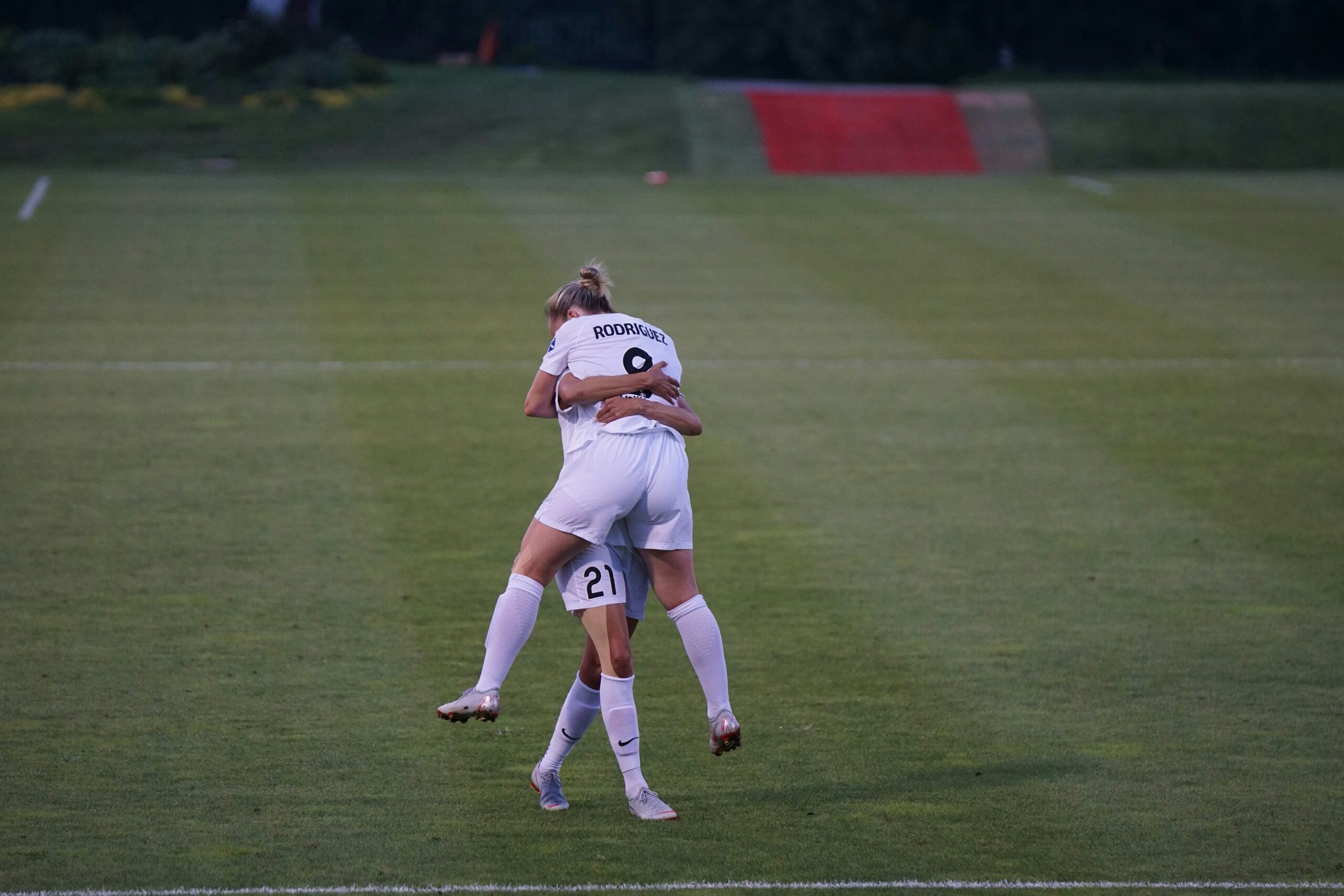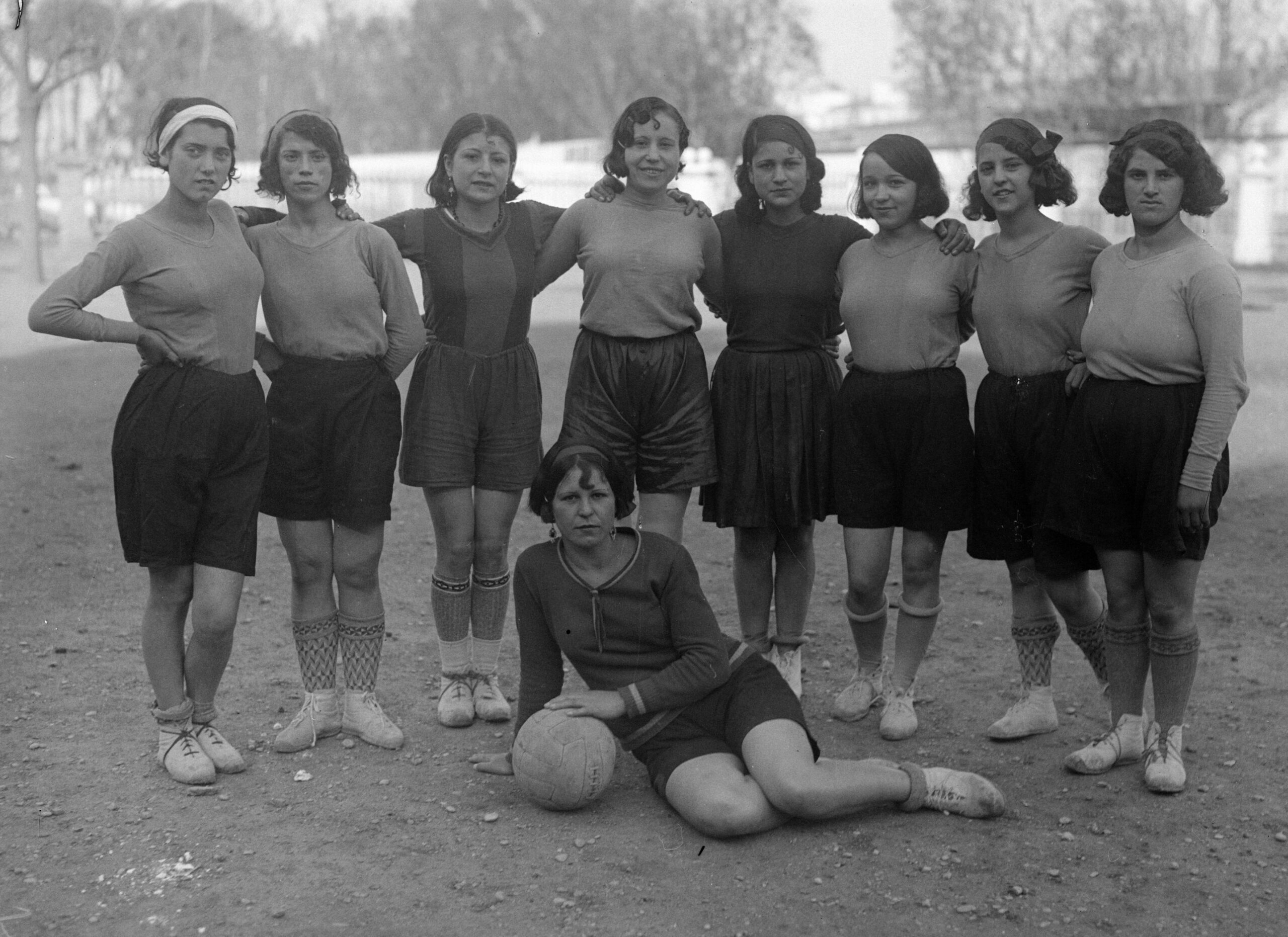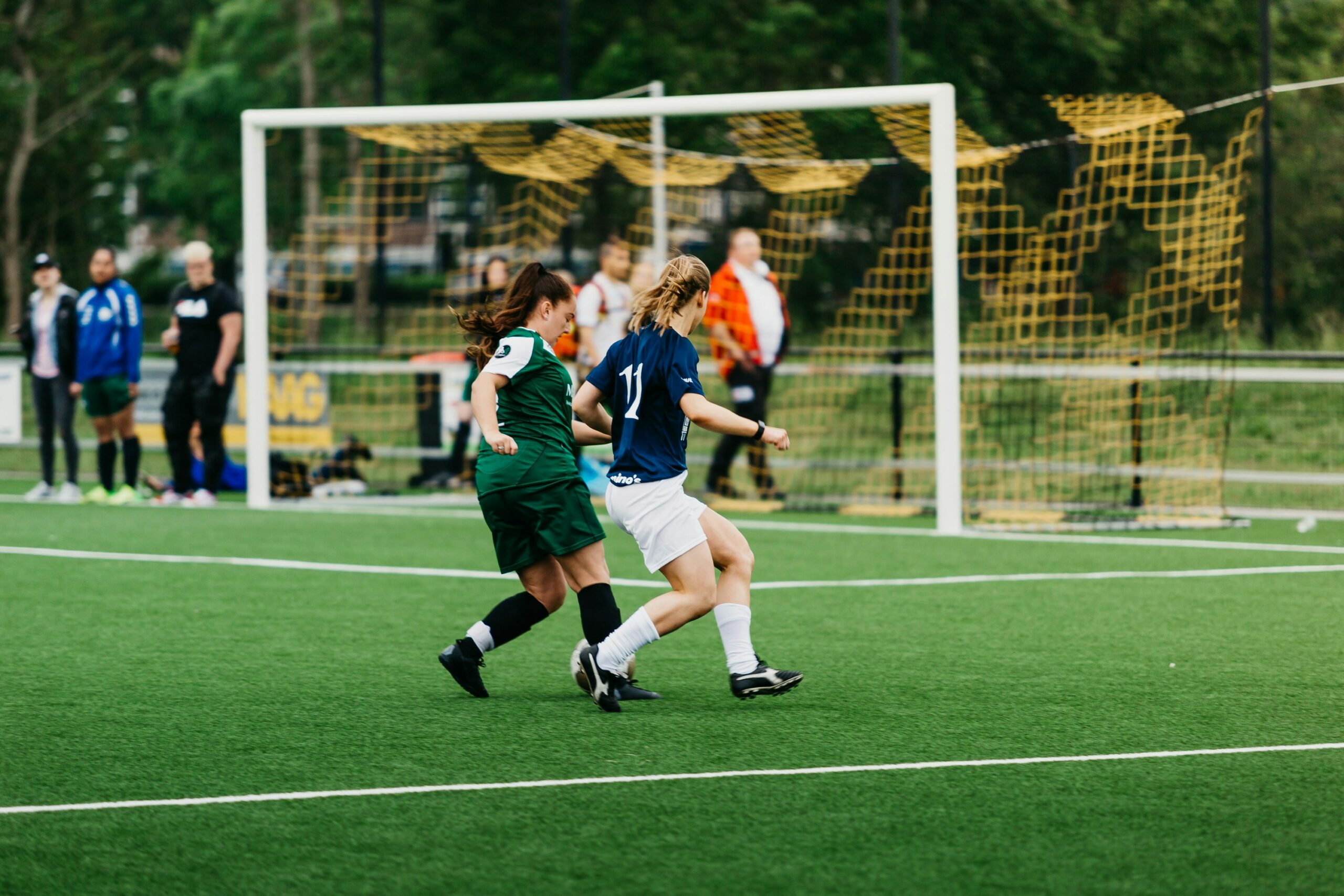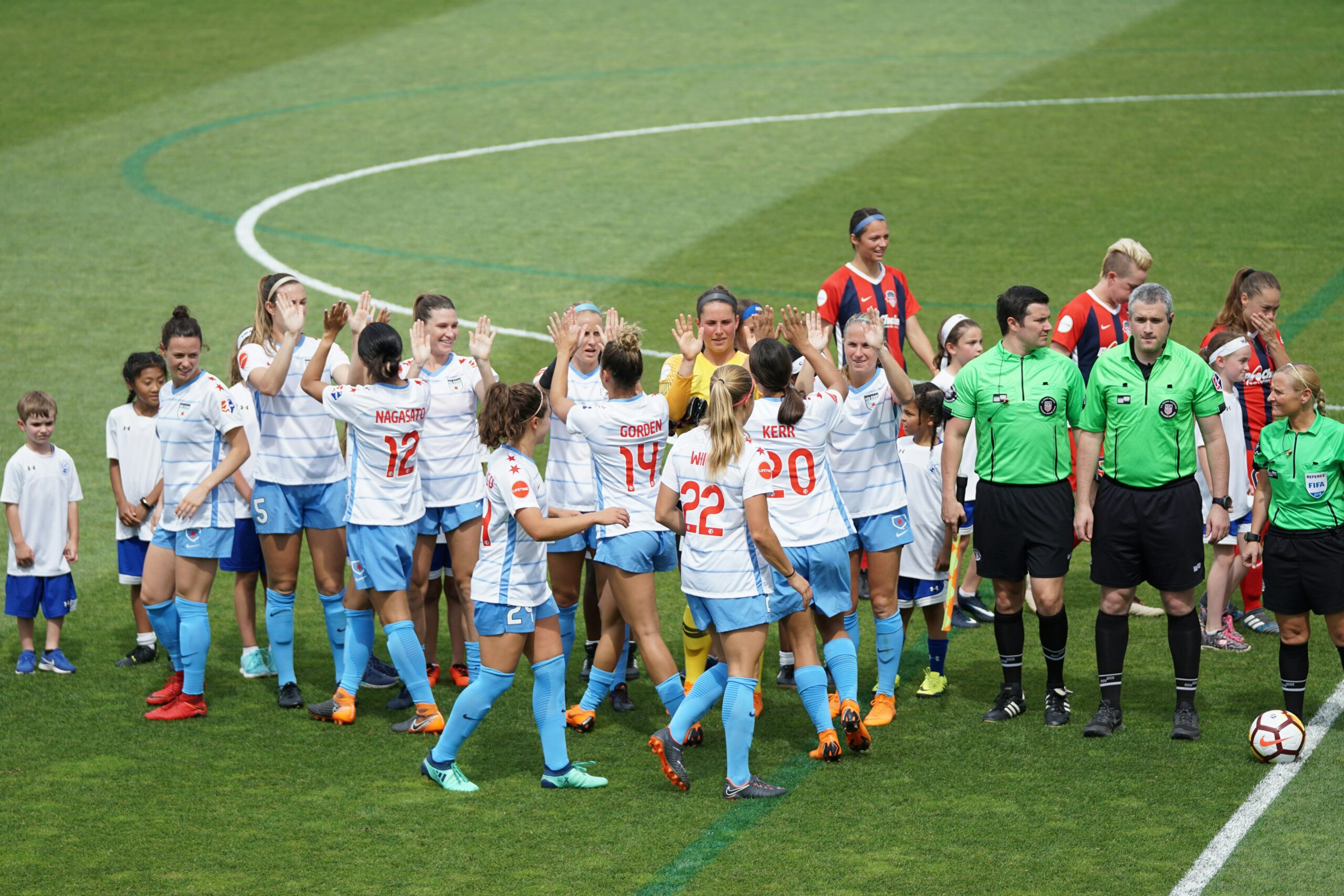With the 2025 UEFA Women’s Euros set to kick off in Switzerland on July 2, fans across Europe are getting ready to rally behind their national teams. This year’s tournament is shaping up to be one of the most thrilling chapters in the history of women’s football.
With packed stadiums, prime-time TV slots and a growing fanbase that just keeps expanding, women’s football is finally getting the spotlight it deserves. It’s exciting, inspiring, and long overdue.
But let’s be real, it wasn’t always like this. The rise of women’s football has been anything but easy. It’s taken years of fighting for respect, recognition, and a place on the pitch. And while things have come a long way, there’s still work to do, from pay gaps to media coverage to basic respect for players.
With the Euros just around the corner, now’s a good time to look back at how far the game has come – and how far it still has to go. Because even with all this momentum, in many ways, women’s football is just kicking off.

The History of Women’s Football
The first recorded women’s football match took place on the 7th of May 1881. Allegedly, Scotland played England, though this is now disputed. The two teams did, however, play several matches, the first of which had a crowd of around 2000. In this match, Lily St Clair scored the first goal. In doing so, she became the first recorded female goal scorer in history.
These matches led to the formation of the British Ladies Football Club (BLFC) in 1885 by Alfred Hewitt-Smith. The 60-minute match between the North and South of the Thames on the 23rd of March 1895 gathered a crowd of around 10,000 paying spectators at Crouch End Athletic Ground. From here, the BLFC went on to attract invaluable attention to the women’s rights movement.
Indeed, Nettie Honeyball, captain of the BLFC, said that she “founded the association…with the fixed resolve of proving to the world that women are not the ‘ornamental and useless’ creatures men have pictured.” She continued to say that she looked “forward to a time when ladies may sit in Parliament and have a voice in the direction of affairs, especially those which concern them the most.”
Women’s football continued to pick up during the First World War. When women took on traditional male roles in dark, dirty factories, authorities encouraged sporting activity to preserve health and well-being. One infamous team, Dick, Kerr & Co, won 746 out of their 800 games between 1917 and 1965. They also produced Lily Parr, the country’s best-ever goal scorer. It is estimated that Parr scored around 900 goals throughout her 30-year career.
 1930s Women's football team in Valencia, Spain.
1930s Women's football team in Valencia, Spain.
The Gentlemen’s Game
By 1921, women’s football was really gaining traction. This, however, came to an abrupt halt when, on the 5th of December, the FA announced a ban on professional women’s football, stating “the game of football is quite unsuitable for females and ought not to be encouraged.”
The ban lasted almost 50 years.
Even after FA lifted the ban on women’s football, many people have stubbornly clung to the belief that football is a “boys’ game.” And it’s not just football — this kind of gender stereotyping runs deep across all sports.
By the time girls hit their teens, many are already stepping away from physical activity. Why? Because they’ve absorbed years of messaging about what their bodies should look like, what’s “ladylike,” and what sports are “for boys.” According to Women in Sport, around 37% of teenage girls don’t play any sport outside of school. That’s not a gap – it’s a crisis.
This lack of access has real consequences. Girls miss out on friendships, confidence, and the joy that comes with being part of a team. For many girls, PE provides the only opportunity to engage in any sport at all — and schools often limit this to netball or dance. Of course, there’s nothing wrong with those activities — but when schools hand footballs to boys and don’t even give girls the chance to try, they send a clear message: this game isn’t for you. Over a third of teenage girls are effectively shut out from football before they ever get to kick a ball. And that’s not just a missed opportunity – it’s a failure of the system.

Misogyny in Football: Jenni Hermoso
Even women who become part of the football community aren’t guaranteed respect. During the Women’s World Cup medal ceremony, the former president of Spain’s football federation, Luis Rubiales, grasped the forward of the team, Jenni Hermoso, by the head. He then proceeded to kiss her on the lips. Despite general outrage at the display, Rubiales brushed off any suggestion that the act was inappropriate. Many people, however, have rightly pointed out that Rubiales would have never kissed a male footballer in a ‘friendly’ celebration.
In a later statement, Hermoso said that the kiss was not consensual. She went on to state, “The situation left me in shock because of the context of the celebration, and with the time passed, and those initial feelings being able to sink, I feel the need to denounce this as I feel that no one, in no workspace, sporting or social, should be a victim to this type of non-consensual behaviour. I felt vulnerable and a victim of aggression, an impulsive act, sexist, out of place and without any type of consent from my part. In short, I wasn’t respected.”
The kiss was a reminder of the misogyny that is still rampant in the football community today. This was further proved by the fact that the Spanish Football Federation went on to threaten to sue Hermoso for lying and defamation. They also threatened to sue the 79 players who signed a letter refusing to play for their country if Luis Rubiales remained in his post. Fortunately, the joint effort of players, staff, and football fans around the world led to the eventual resignation of Rubiales. It also had an extraordinary impact on the Spain’s version of the #MeToo movement, #SeAcabó. This was a fight against sexual harassment and assault, especially in the workplace.
Overall, Jenni Hermoso’s case serves as a poignant reminder that society still forces women to fight for respect.
Hooliganism, Homophobia and General Hellishness
According to Kick It Out, 52% of women who attend men’s football matches have experienced sexist language on matchdays. Not only this, but 42% said they had experienced sexist behaviours like being questioned on their knowledge of the rules, wolf-whistling, and harassment. Some fans even reported experiences of inappropriate touching, physical violence, and sexual assault. A significant minority of 1 in 4 women claimed they felt unsafe at games.
It is a well-known fact that there is a culture of hooliganism at men’s football matches. This includes disorderly, aggressive or even violent behaviour, like fights. Pitch invasions are no longer uncommon. It’s not even surprising to hear that fans have thrown objects at players or other fans during the matches. For women, this culture represents the toxic masculinity that says they can’t play football. That football is a man’s sport.
In fact, men’s football matches are uncomfortable, even frightening, for the vast majority of marginalised groups. It’s no wonder that there is only one openly gay professional male footballer. In the ‘Out for Sport’ report by Scotland’s Equality Network, out of more than 1700 respondents, 79% thought there was homophobia in sport. 62% claimed to have experienced homophobia or transphobia in sport.

The Battle Against Bias
Despite the success of the Lionesses in the 2022 Euros, and indeed the incredible displays by many female footballers, many men still argue that women’s football is slow. Boring. Some even go so far as to say it is a completely different game.
People usually support this claim by arguing that physical differences between men and women cause athletic inferiority. Yet, strangely enough, no one makes similar arguments about the performance of boxers in different weight categories. Indeed, it’s not even true! In a survey from 2023, 600 people were shown highlights from professional football videos and asked to rate the player’s performances. Participants in the control group watched regular videos. In the experimental group, however, researchers blurred the players, making it impossible to distinguish between men and women.
The control group rated the men’s performance significantly higher. The experimental group rated both groups equally.
This just goes to show how sneaky bias can mess with how we judge sport. Take Chloe Kelly’s penalty in the World Cup quarter-finals: her shot was faster than every single Premier League goal in 2023. Yep, faster than the men’s stars themselves! And yet, somehow, people still trot out the same tired old clichés: women’s football is “slow,” “boring,” or “just not the same.”
It’s like saying a lightning bolt isn’t flashy enough just because it didn’t come with thunder.
If women’s football is going to truly take off, we need to kick these outdated biases right off the pitch. Talent doesn’t care about gender.

Women’s Football and the Grassroots Programme
Interest in Women’s football blossomed in the UK after the Lionesses’ historic Euros win in 2022. Indeed, the England Women’s team seems to have become a beloved part of our culture. And this is important! Not only has support for the Lionesses bolstered media coverage and interest in women’s football in general, but it has also shown that football stereotypes can be surmounted. It has shown that anyone can play football. Anyone.
Indeed, this led to more investment into the grassroots football programme. Players like Jessica Naz and Alessia Russo have highlighted the impact of this programme by crediting grassroots football as the beginning of their incredible stories.
Grassroots football prioritises the love of football and the joy of participation. It is football for anyone at all, regardless of age, ability, ethnicity, nationality, sex, sexual orientation or any other personal trait. Grassroots football includes children’s football, disability football, walking football, as well as football for veterans, homeless people, or refugees. UEFA claim that grassroots football is ‘vital to ensuring the long-term health and growth of football. It is also a vehicle for education, personal development and mental health, and can have a hugely positive impact on society’.
History in the Making
Since that first match in 1881, women’s football has grown extraordinarily. It is now respected, loved, and seen as an important part of our culture. We still, however, have a very long way to go. Male footballers still earn extortionately more than female footballers. Harry Kane was estimated to earn 60 times the salary of England women’s captain, Millie Bright, in 2023. And female footballers are still constantly subjected to unfair biases and misogyny. So, although there has been significant improvement, women’s football is still not as appreciated as it deserves to be.
So, here’s to the Lionesses in the 2025 Euros — may they make history once again. Because when it comes to women’s football, this is just the beginning of a much bigger story.
